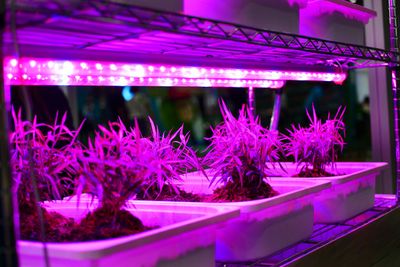What are LED Grow Lights For?
LED grow lights are a relatively new horticultural introduction, although NASA has been studying them for decades. Are LED lights better than traditional grow lights? That depends upon the crop on which they are used, as well as economic and energy expenditure factors. Just like fluorescent and incandescent bulbs, LED bulbs produce light that is needed by plants. Most plants need light waves of red and blue. The chemicals that control plant growth respond to both colors differently. Phytochromes drive leafy growth and are responsive to red light, while cryptochromes, which control plant light response, are sensitive to blue lights. You can get good growth with just one or the other of the color waves, but utilizing both will result in bigger yields and healthier plants with quicker growth. LED lights can be customized to emit long or short light waves as well as certain levels of color to improve plant performance.
Are LED Lights Better?
There is not just one difference between LED lights and grow lights. While LED lights require more of a cash layout, they will last more than twice as long as other lights. Additionally, they require less energy, which saves money over time. Additionally, there is no gas, mercury, lead, breakable filament, and the bulbs are tougher and harder to break. As opposed to many other grow lights, LEDs are also cooler and can be situated closer to plants without a chance of burning leaves. Should you use LED lights? The initial cost of your grow light set up and the duration of use can help answer that question.
Specific LED Grow Light Info
If you balk at the cost of using an LED system, consider that the bulbs are 80% efficient. That means they convert 80% of the energy they use into light. With good LED lights, they draw fewer watts (electric energy) while producing brighter light as compared to regular grow bulbs. Modern LED lights are engineered to reduce the amount of heat given off, either by use of a heat sink or by diverting heat away from the diodes. All this points to a winning argument for LED lights, but if you are a new gardener or simply don’t want to sink a lot of money into your indoor growing system, traditional grow lights will work just fine. Just remember that the cost of replacement and energy will overall be fractionally higher as time goes by.
